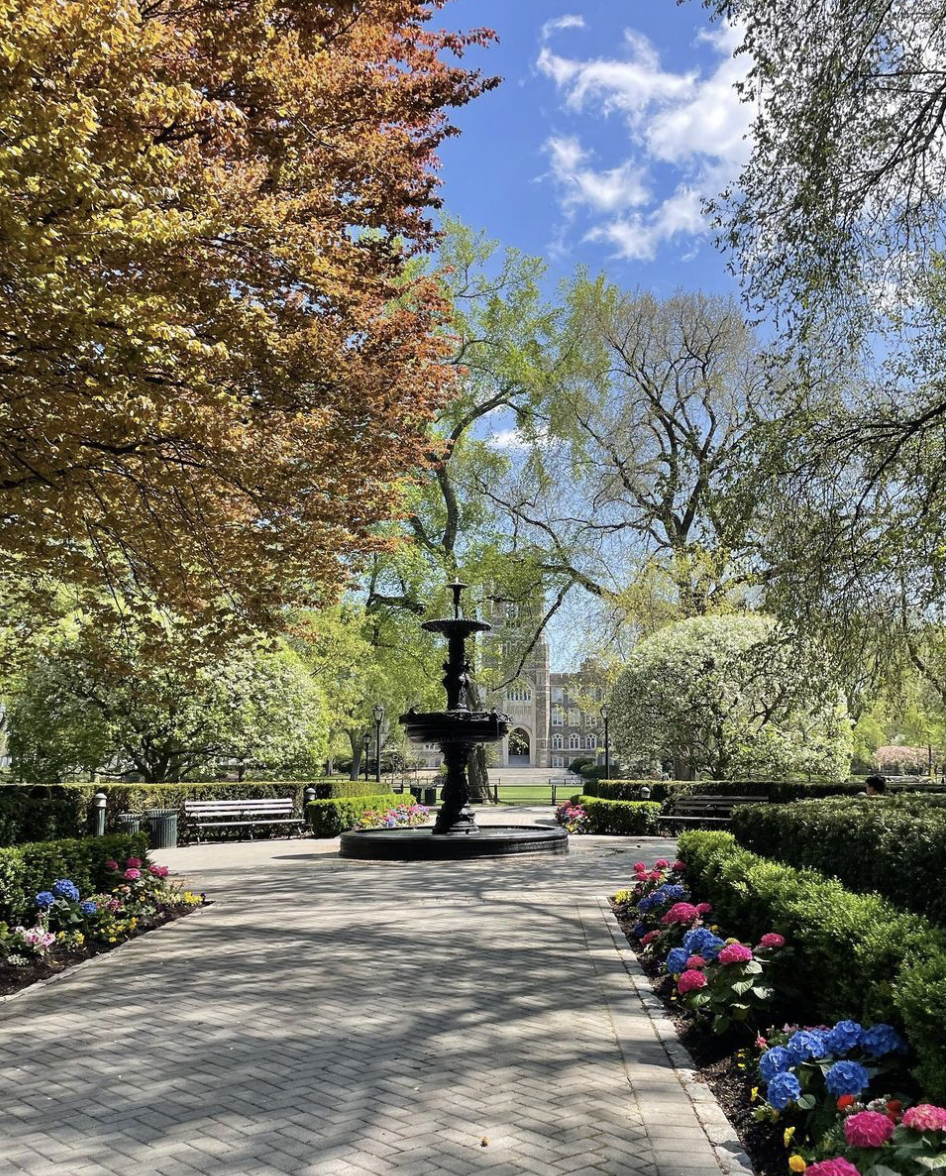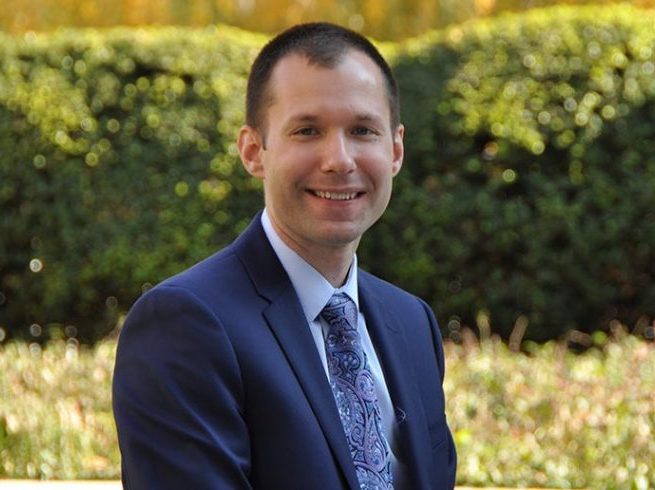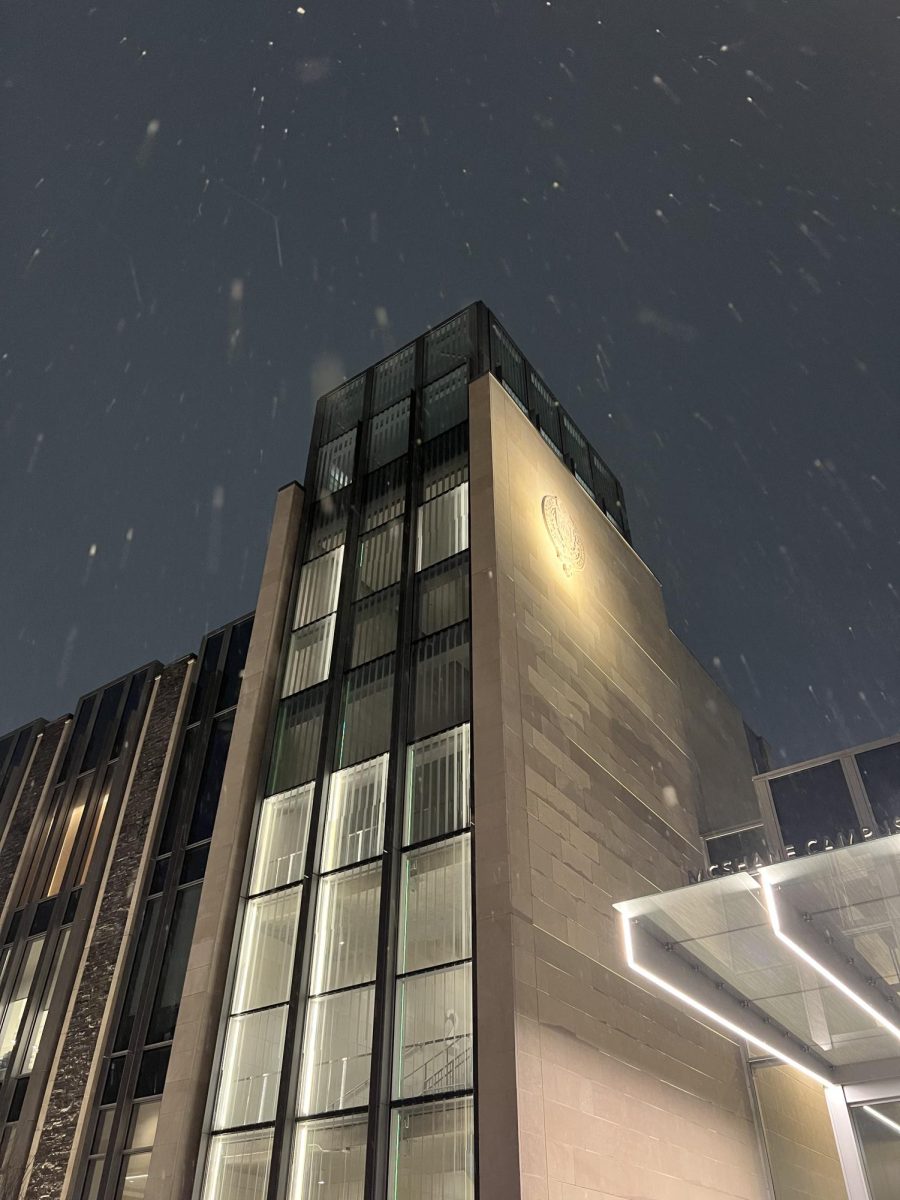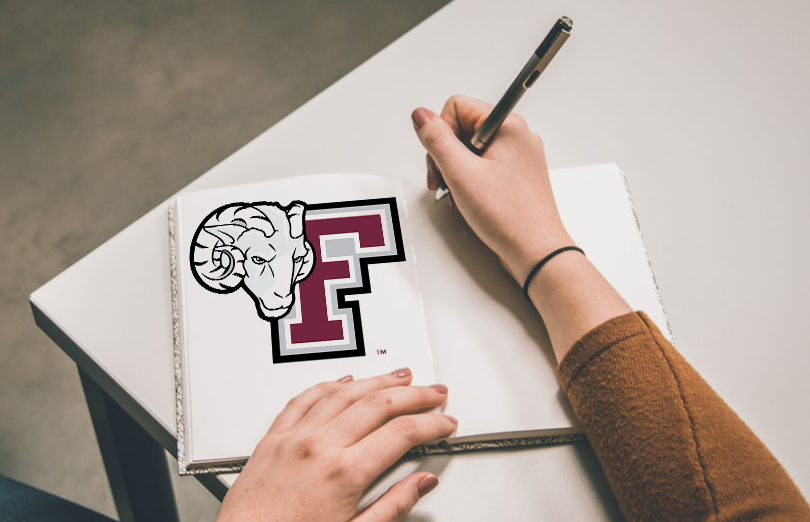Jan Bierowiec, FCRH ’24, is positively grounded in reality. The 21-year-old is an engineering physics major with a concentration in electrical engineering and a minor in computer science. Bierowiec finds happiness in sharing — and making it easier to share — his passion for physics with others, and is an accelerated “4+1 Program” student who intends to begin earning his Master’s in computer science in robotics this fall.
“I’m a born-and-raised New Yorker,” said the Queens native, who chose Fordham University out of his desire to remain close to home for college, and continue his enrollment in a Catholic school after graduating from Cathedral Preparatory in Elmhurst, Queens. It was at Cathedral where Bierowiec became inspired to select his future major after taking physics during his high school junior year. Bierowiec specifically enjoyed the link between mathematics and the real world. “If you study math alone, it doesn’t always seem applicable,” he said, referencing math in physical science. “I was always interested in why if a car turns left, your body moves to the right, why gravity works the way it does — everything just seemed to click in terms of applicability. I wanted to look around the world and be like, ‘Oh there’s that concept!’” He noted subjects like literature and history are interpretatively thought-based, where one observes society and critiques the individual, “whereas with physics, you apply what you see around you,” said Bierowiec. “You see problems, and you have solutions to those problems.”
From the start of his sophomore year in fall 2021 to the end of his junior year in spring 2023, Bierowiec’s research project focused on physics-related education. “My goal was to create a physics website accessible to students other than those enrolled in a class,” Bierowiec said. He hadn’t initially planned to conduct research at Rose Hill when he applied to Fordham, but upon learning of the opportunities offered in physics, and the benefits enjoyed by postgraduate students, he figured he’d take a shot at it. Bierowiec’s idea was to display simulations and practice exercises of high school and college-level physics on his platform, foreseeing his plan as a way for students to efficiently learn physical theories. “I wanted to help students conceptually understand the visible physics behind the theories,” he said. Instead of having to buy a textbook or deal with a professor’s confusing examples, said Bierowiec, students could play with simulations in computation editing, or plot an object’s free-fall descent. Users would simply input factors of velocity, acceleration or other variables, and receive calculations and visual simulations. These are supplemented by sections imploring students to solve practice problems by writing their math work. “Putting your knowledge onto paper and writing everything out by hand always helps,” said Bierowiec.
“Much of physics is theoretical,” Bierowiec added. “If you don’t have a good comp-sci or programming background, it’s tough to link theoretical physics with code. I specifically made that link for others, to show ‘this’ is the theory part, and here’s the code that already exists.” In looking to the future, Bierowiec aims to break into developing STEM education with an app featuring geometric proofs, trigonometric theorems, algebraic formulas and intro-to-calculus content for high schools. In his atomically small free time, he’s helping to contribute to the development of Fordham’s first-ever quantum computing course by providing feedback on related textbooks.
Bierowiec is the son of Polish immigrants, and is fluent in Polish as well as English. In his youth, Bierowiec was a member of the Polish Scouting Organization (a relative of Scouts BSA/Boy Scouts) and achieved the program’s highest rank: Scout of the Republic of Poland. He’s presently a troop leader in his Venturing unit. “With respect to diligence, I like to set smaller goals to reach the grander goal. With the physics education website, I had the thought to make it, and thought ‘what do I need to do?’ I applied the CSS, HTML and JavaScript codes, and said, ‘How do I make the simulations now?’ and researched physics simulations with p5.js.” Bierowiec agrees that his step-by-step research process reflects his personality: “As a Scout, I need to plan out things. If we’re planning a hike, I need to plan transport, food and water, how many people are going, what we need to buy and pay, what gear we’re bringing and how long the trip is. This really relates to being diligent, a planner and a leader.”
In April, Bierowiec is presenting his work in quantum chromodynamics documentation at Fordham’s Spring Research Symposium, where he plans to highlight his research process in pedagogically understanding how students connect theoretical physics and code. “Definitely the learning process was the best part! I’m amazed at myself,” Bierowiec said. He recalled updating a website in his first programming course, Intro to C++, where he had to scrap 70% of his code because he needed to simplify it. “It hurt to put in so much work only to delete it, though I found it amusing to see how life could be funny, like, ‘Wow, I could’ve done this so much simpler without wasting so much time.’ But it was good to learn that sometimes you need to fail, simplify and make corrections.”













































































































































































































